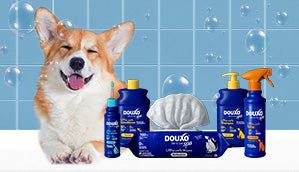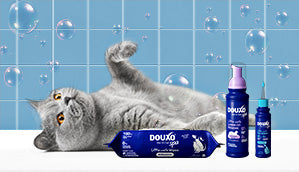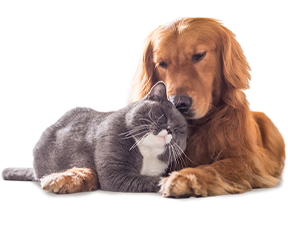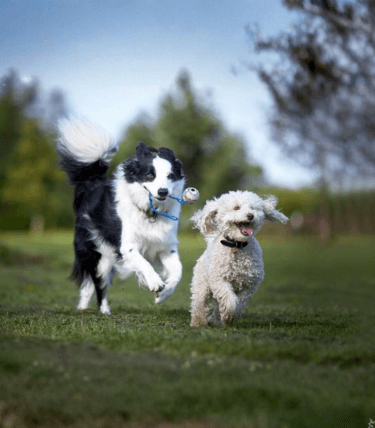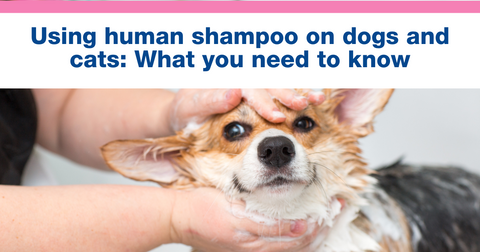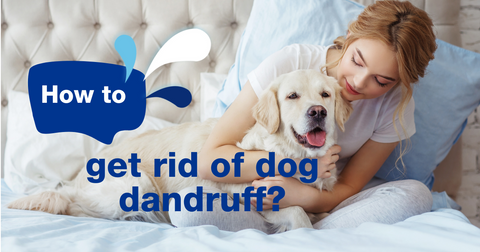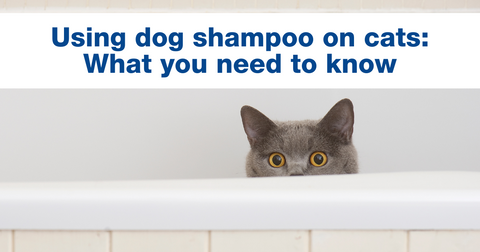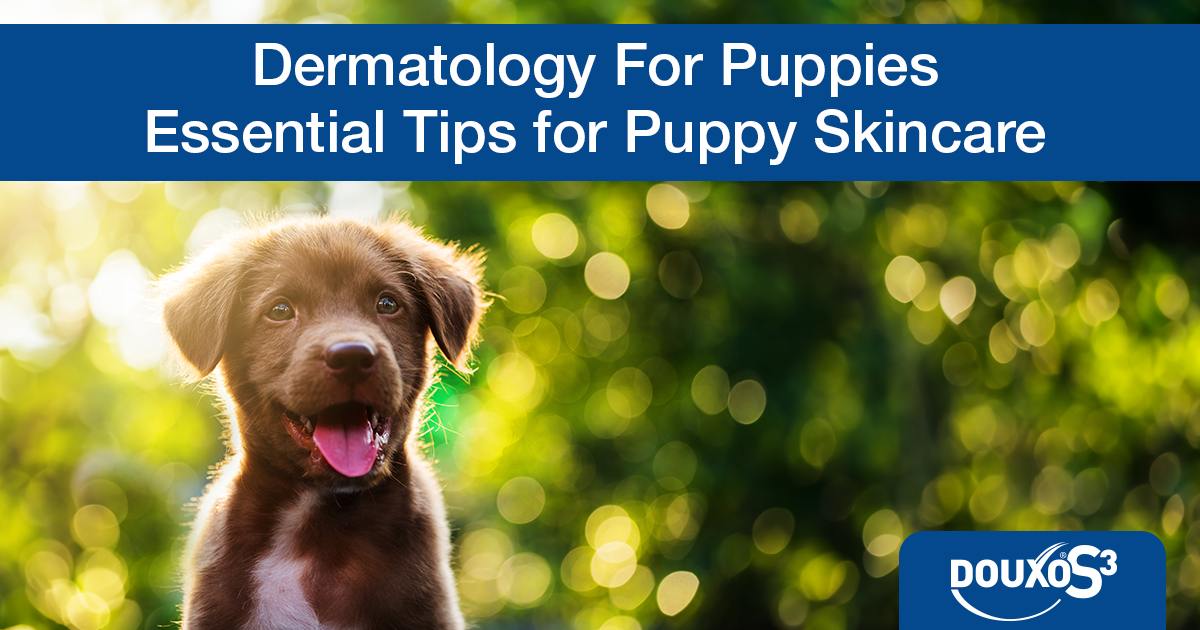
Dermatology for Puppies: Essential Tips for Puppy Skincare
Chewed shoelaces, stolen socks, and endless excitement—no, it’s not a localised tornado in your living room; it’s just the joy of welcoming a new puppy into your home! Best take a few precautions and hide any delicate ornaments while you can.
But on top of protecting your belongings from the adorable chaos a new pup brings, it’s important to make sure your puppy is prepared for the big world, too.
Just like human babies, puppies have sensitive skin that often requires special care to keep them happy and healthy. From managing common skin problems to choosing the right grooming routine, dermatology is an essential component of a puppy’s overall well-being. In this guide, we’ll run through everything you need to know about keeping your pup’s skin soft, itch-free, and protected—because a healthy coat starts with healthy skin!
Here's what we’ll cover:
- Understanding your puppy’s skin
- Common puppy skin problems & how to address them
- Building a puppy skincare routine
- Final tips for healthy puppy skin
- Puppy skincare FAQs
And with that, let’s dive straight in!
Understanding Your Puppy’s Skin
First up, why is puppy skincare such an important topic?
Generally speaking, a puppy’s skin is much more sensitive than that of an adult dog. While adult dogs can experience sensitive skin too, puppies are still in the early stages of development. This means their skin—and their immune system—can be more vulnerable to irritation, dryness, and allergies. Their protective skin barrier isn’t fully mature yet, so triggers like pollen, parasites, or even the wrong grooming products have a greater chance of causing an adverse reaction.
Because of this, taking a moment to consider your puppy’s skincare right from the start can help to prevent discomfort and will set them up for a lifetime of healthy skin. But what exactly makes puppy skincare different, and what should you look out for? Let’s take a closer look.

Common Puppy Skin Problems & How to Address Them
Before discussing the specifics of your puppy’s skincare routine, it’s helpful to understand the most common skin problems that puppies are likely to face. This will enable you to recognise any early signs of irritation or discomfort and ensure you can act before any minor issues have a chance to worsen.
Here are some common skin problems in puppies and how to manage them:
1. Dry, Flaky Skin
Puppy skin is naturally delicate, and there are a range of environmental factors like cold weather, low humidity, or harsh shampoos that can strip away essential moisture, leading to dryness and flakiness.
If your puppy is experiencing flaky skin it’s recommended to use a mild, puppy-safe shampoo to gently cleanse their skin without stripping away natural oils. If your puppy has more dandruff a specific shampoo like DOUXO® S3 SEB is an effective option, using specially formulated ingredients to rebalance sebum (the oily substance produced to stop your pup’s skin from drying out) and limit dandruff production while boosting your puppy’s overall skin strength.
2. Itchy Skin & Allergies
Puppies can be similarly sensitive to environmental allergens (like pollen or dust), food ingredients, or even certain grooming products. If your pup is frequently scratching or biting, allergies could very well be the culprit. One particularly common skin condition in dogs is atopic dermatitis, which can often affect areas like the paws, ears, or belly. In this situation, you should identify and eliminate potential allergens where possible. Using hypoallergenic grooming products—such as those in the DOUXO® S3 CALM range and discussing diet adjustments with your vet can help manage symptoms. Bear in mind, it’s always best to take your puppy to the vet for a check-up in case of any underlying medical causes.
3. Parasites
External parasites like fleas, ticks, and mites can cause intense itching and redness on your puppy’s skin and even infections if left untreated. Regular flea prevention treatments and routine checks can help keep parasites at bay, especially after walks in grassy areas. Once again, if you notice your puppy is scratching excessively or is experiencing scabs or hair loss, visit your vet for appropriate advice.
4. Fungal & Bacterial Infections
Ringworm (a fungal infection) and bacterial infections can appear as circular patches of hair loss, scaly skin, or red, irritated areas. These conditions can be contagious and should be addressed promptly.
As always, consult your vet for diagnosis and appropriate next steps to help manage irritation.
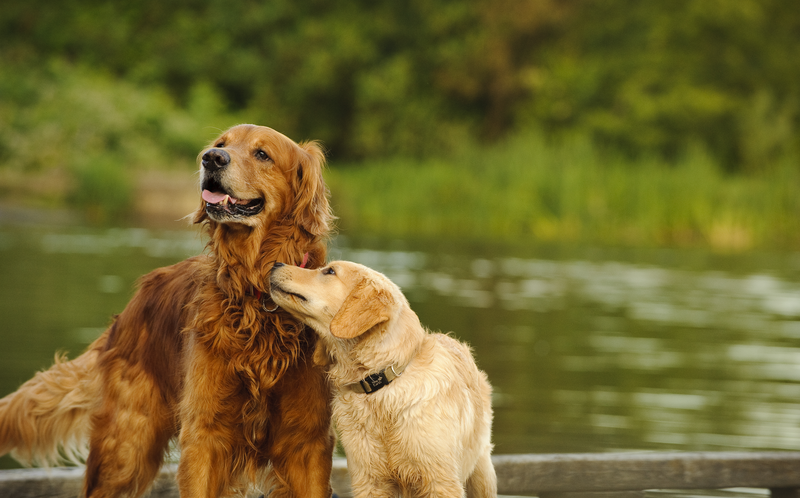
Building a Puppy Skincare Routine
Now that we understand a little more about our puppies’ skin and the types of problems they can face, it’s time to discuss puppy skincare routines. Developing a strong dermatology routine early on is a great way to ensure your puppy’s skin remains healthy as they grow and will hopefully prevent problems from developing later on.
1. Bathing
Puppies don’t need frequent baths—every 3-4 weeks is usually considered ideal, though you can learn more about bathing frequency in our previous article here. It’s important to use a pet-safe, high-quality shampoo to prevent skin dryness and irritation when bathing your dog, whether they’re still a puppy or fully grown:
- For routine baths, we recommend the DOUXO® SPA range. These products use ultra-gentle formulas to hydrate and strengthen your puppy’s skin for skin barrier ecosystem protection.
- For irritated skin, DOUXO® S3 CALM Shampoo is specially formulated to provide a soothing effect while protecting and rebalancing your puppy’s skin ecosystem.
2. Moisturising & Targeted Skincare
If you find your pooch needs extra moisturising between baths, targeted puppy skincare products can help maintain hydration and comfort:
- DOUXO® S3 CALM Mousse is a leave-on formula that hydrates and soothes sensitive skin. It has a range of benefits, and because it has a longer contact with your puppy’s skin, it allows for optimal performance.
- DOUXO® S3 CALM Pads are ideal for gently cleansing and maintaining skin health in specific areas. Their convenient design makes them particularly effective as an on-the-go solution.
3. Ear Care
Keeping ears clean is a key part of a puppy’s skincare routine, helping to reduce the risk of infections. Use vet-approved ear cleaners and check for redness or unusual odours. You can learn more about cleaning a dog’s ears in our dedicated guide.
4. Brushing
Regular brushing removes dirt and loose hair while improving circulation and also helps distribute natural oils that keep the skin moisturised and the coat shiny. What’s more, brushing is an excellent opportunity to check for any signs of common puppy skin problems, such as dry patches, redness, or parasites.
Different coat types may require different brushing routines:
- Short-haired breeds: Brush once or twice a week.
- Medium-haired breeds: Brush a few times a week.
- Long-haired breeds: Recommended to brush daily.
5. Checking for Fleas & Parasites
Inspect your puppy’s fur regularly for signs of fleas, ticks, or mites. The simplest technique is to run your fingers through their coat, paying close attention to warm areas like the ears, neck, and underarms where parasites often hide. Using a fine-toothed flea comb can also help spot fleas.
If you notice any signs of parasites, consult your vet for the best course of action. Using vet-recommended flea and tick preventatives as part of your puppy skincare routine will help protect your puppy and keep their skin healthy.
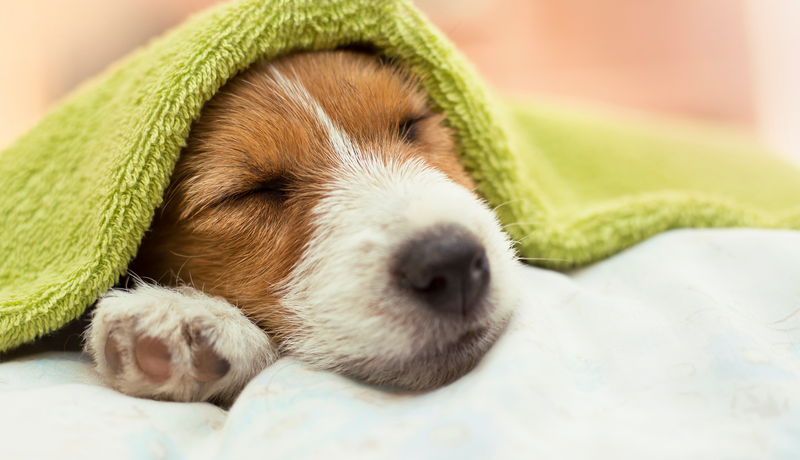
Final Tips for Healthy Puppy Skin
So, there we have it—following our advice on puppy skincare will give your pooch’s coat the best possible chances of health and happiness as they embrace the big world ahead of them!
But before we wrap up, remember that puppy dermatology begins with a clean environment and a well-balanced diet that’s rich in essential fatty acids. Finally, always be on the lookout for early signs of skin issues, such as excessive scratching, redness, or dry patches. Occasional scratching can be perfectly normal, but when you notice persistent itching or biting at the skin, it’s time to consult with your vet. Addressing symptoms early on will ensure your puppy’s skin can be comfortable and problem-free, right the way through to adulthood.
To learn more about skincare for your dog, why not check out the rest of our articles online? Or sign up to our newsletter with your email address to receive the latest news and guides straight to your inbox!
Puppy Skincare FAQs
Do puppies require different skincare routines than adult dogs?
Yes, puppies have more sensitive skin than adult dogs, so they often require a different approach to their skincare. More specifically, a puppy’s skin barrier is still developing which means they can be more prone to irritation and dryness. It’s recommended to use specially formulated dog-friendly shampoos to ensure a puppy’s skin stays healthy and hydrated while minimising the risk of allergic reactions.
How can I introduce my puppy to a skincare routine?
To introduce a puppy to a skincare routine, it’s recommended to start slowly with gentle brushing and occasional baths, helping your puppy to become familiar with the process. Introduce them to different grooming products gradually, allowing them to sniff and explore before use. Always use positive reinforcement, such as treats and praise, to create a relaxed and enjoyable experience.
How can I moisturise my puppy’s skin?
To moisturise your puppy’s skin, consider using a gentle, pet-safe moisturising mousse or shampoo that’s been specially designed for dogs. Products with hydrating ingredients such as Ophytrium can be particularly effective. Regular brushing can also help distribute natural oils, and ensuring your puppy has a balanced diet that includes omega-3 and omega-6 fatty acids may support overall skin health.
If your puppy has persistent dryness or irritation, consult your vet for tailored advice.





